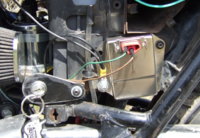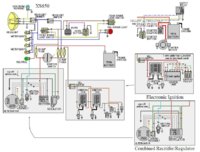Newbie
Newbie
- Messages
- 20
- Reaction score
- 0
- Points
- 1
I'm working the infamous charging issue on my 78 XS.....With the key switch turned on, bike not running, I'm measuring 11.99 volts on the brown wire going to the voltage regulator, but I'm only measuring 0.11 volts on the green wire coming out of the regulator, and 0.06 volts at the positive brush.
I'm using the Chrysler regulator and the radio shack rectifiers. Shouldn't the green wire's voltage be the same as the brown wire?
I'm using the Chrysler regulator and the radio shack rectifiers. Shouldn't the green wire's voltage be the same as the brown wire?



